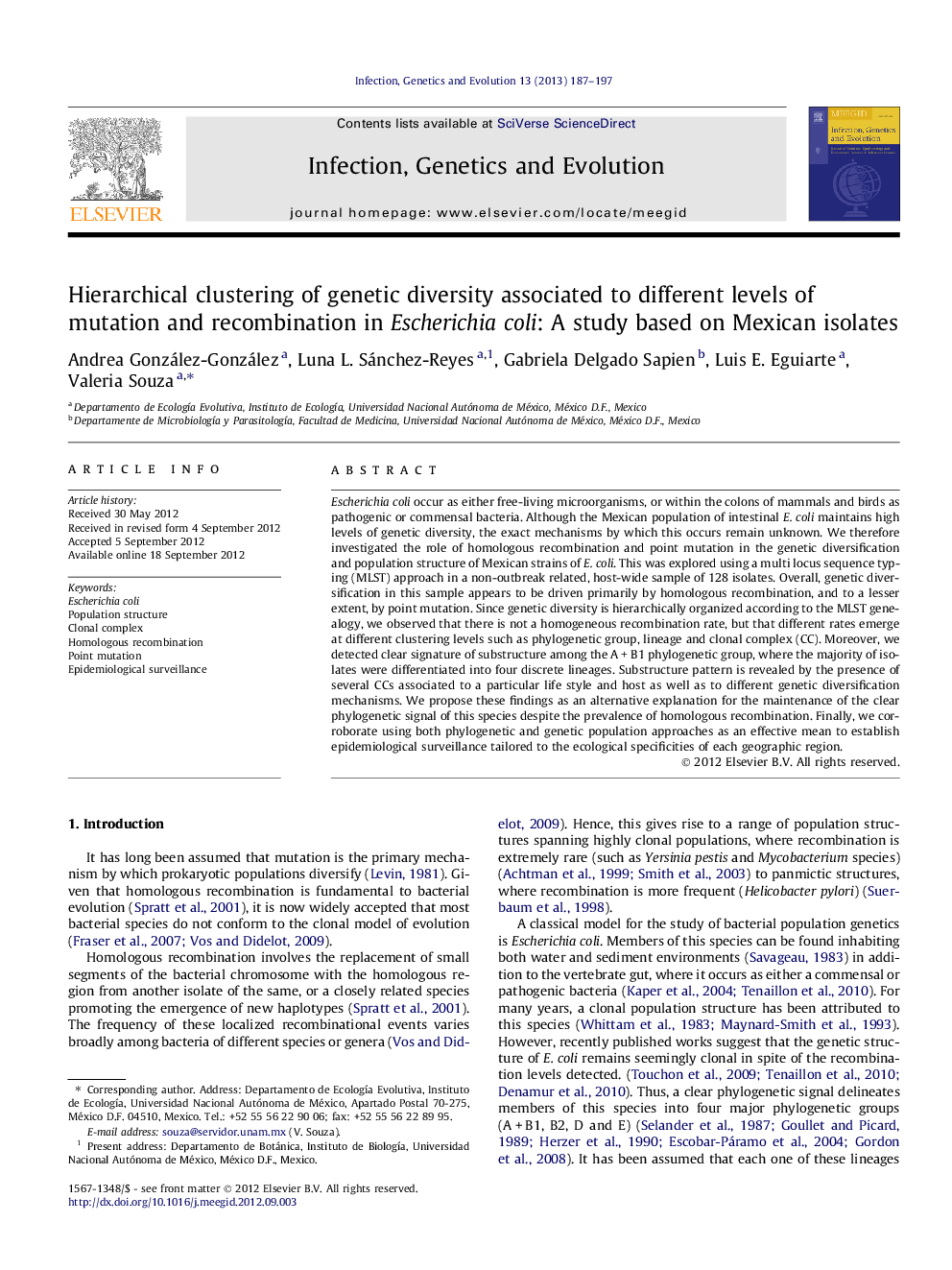| Article ID | Journal | Published Year | Pages | File Type |
|---|---|---|---|---|
| 5911015 | Infection, Genetics and Evolution | 2013 | 11 Pages |
Escherichia coli occur as either free-living microorganisms, or within the colons of mammals and birds as pathogenic or commensal bacteria. Although the Mexican population of intestinal E. coli maintains high levels of genetic diversity, the exact mechanisms by which this occurs remain unknown. We therefore investigated the role of homologous recombination and point mutation in the genetic diversification and population structure of Mexican strains of E. coli. This was explored using a multi locus sequence typing (MLST) approach in a non-outbreak related, host-wide sample of 128 isolates. Overall, genetic diversification in this sample appears to be driven primarily by homologous recombination, and to a lesser extent, by point mutation. Since genetic diversity is hierarchically organized according to the MLST genealogy, we observed that there is not a homogeneous recombination rate, but that different rates emerge at different clustering levels such as phylogenetic group, lineage and clonal complex (CC). Moreover, we detected clear signature of substructure among the AÂ +Â B1 phylogenetic group, where the majority of isolates were differentiated into four discrete lineages. Substructure pattern is revealed by the presence of several CCs associated to a particular life style and host as well as to different genetic diversification mechanisms. We propose these findings as an alternative explanation for the maintenance of the clear phylogenetic signal of this species despite the prevalence of homologous recombination. Finally, we corroborate using both phylogenetic and genetic population approaches as an effective mean to establish epidemiological surveillance tailored to the ecological specificities of each geographic region.
⺠Mechanisms and processes of genetic diversification in Mexican Escherichia coli were studied. ⺠Homologous recombination explains the majority of the genetic diversity. ⺠Genetic diversity is hierarchically organized according to the Mexican genealogy. ⺠Each clustering level of the genealogy is coupled to different recombination rates. ⺠We propose an alternative explanation for the clonal paradigm in E. coli.
